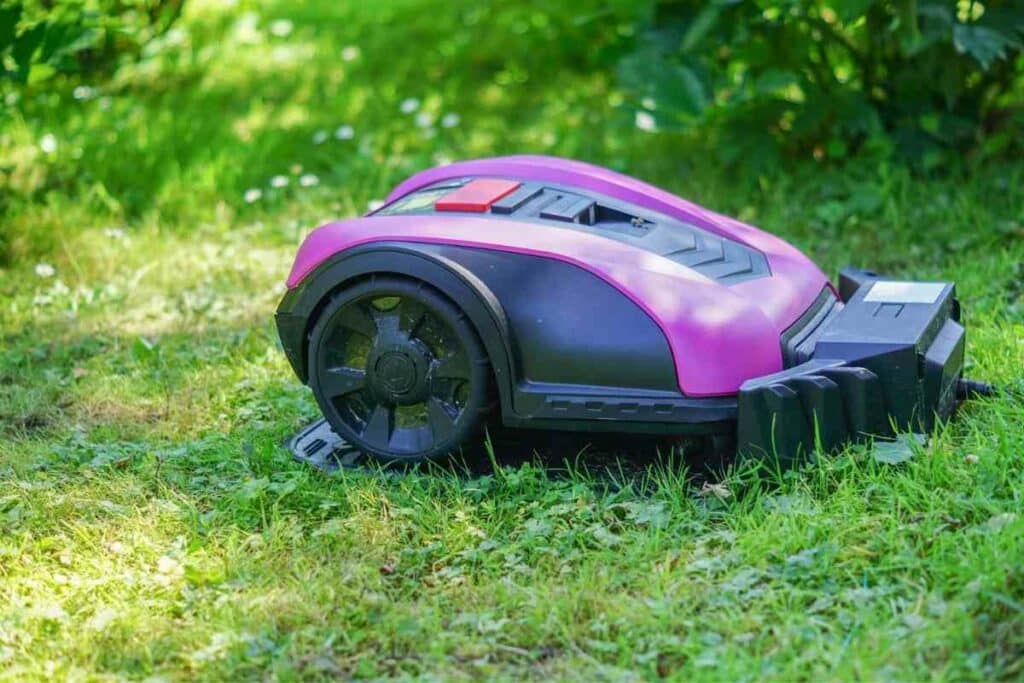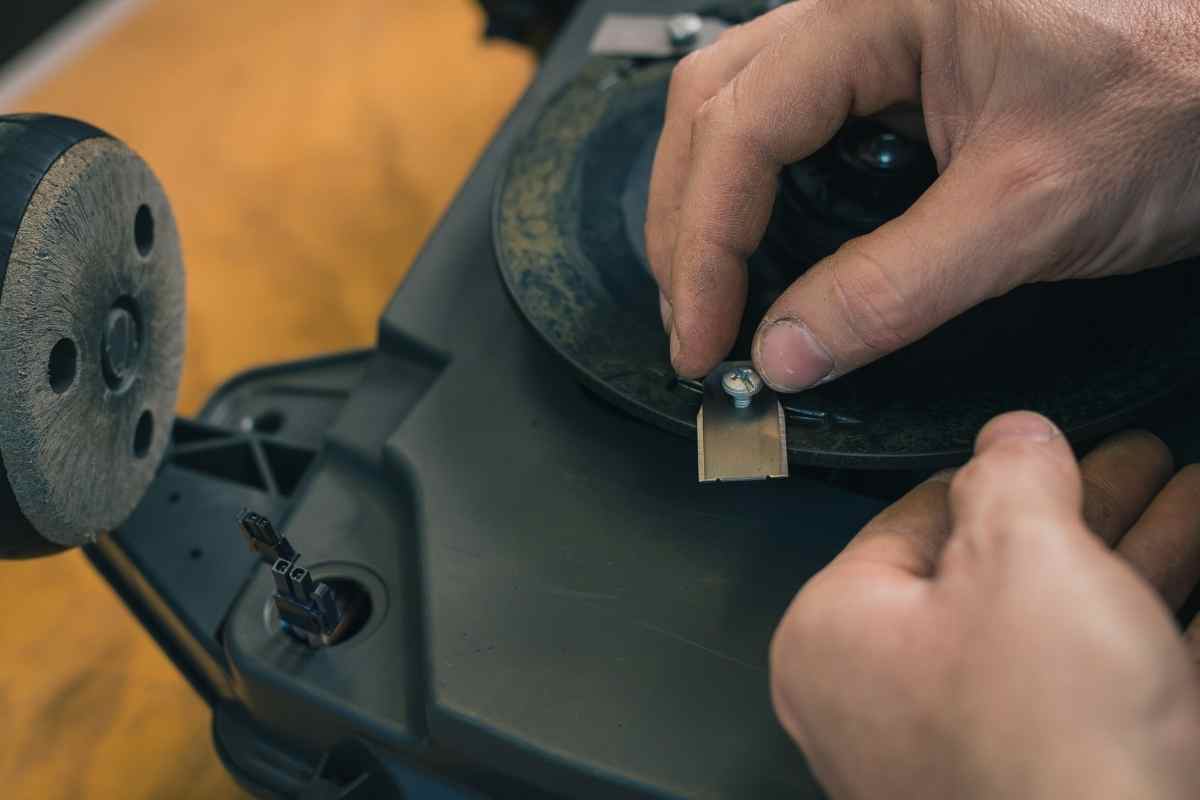For the amount of work they do, robotic mowers look surprisingly compact. Unlike traditional push-mowers or ride-ons these futuristic machines are not dragging around a bag for clippings.
In fact, the secret of a robotic mower’s great results on your lawn is down to the fact that it holds no cut grass but proves efficient at chopping up the grass and laying on your lawn as a mulch.
In this short article, we will take a close look at the mulching action of robotic mowers and how they cut your grass with absolutely no stored clippings without leaving your lawn looking a mess.
Find out the great benefits of mulching and how it not only saves time but also helps your lawn look amazing!
Onboard grass storeage is not possible
Here are some reasons why robotic mowers are not holding grass clippings on board:
- Emptying grass clippings from a robotic mower would fall to you: the robot mower should do all the hard work, but onboard grass clippings will have to be emptied by someone.
- Neglected rotted grass stored on a robot mower is no fun: in households that are yard work-averse, the grass cuttings on board may just sit in the mower, eventually becoming a rotted mess.
- Moisture from grass clippings and electronic components are a bad combination: grass clippings are mostly water, which may raise the humidity of the delicate internal circuitry of a mower, causing corrosion and failure.
- Dragging collected grass clippings around your yard will make your robot mower work harder: this means mowing your lawn will take longer, consume more energy, and require a more powerful motor and parts.
- Onboard grass storage would produce a bulky, awkward design: with grass storage dragged behind the mower, the profile and footprint of these smart devices would be completely altered.
Robotic mowers do not store grass clippings because they chop it into mulch
Automated lawnmowers have a powerful motor that drives rotating blades at an extremely high speed. When the blades come into contact with the grass, it chops up the excess growth with almost centrifugal force.
This produces a mulch of particulate grass clippings that are left on your lawn as the mower continues its rounds.
Mulching makes sense for your lawn
If the thought of mulching brings to mind a lawn strewn with green decomposing goop, we’re here to reassure you that mulching won’t leave your lawn looking a mess.
The mulching action of robotic mowers means that robotic mowers can tackle lawns of any size. Unlike conventional mulching lawn mowers, size and cutting width is less is a concern.
A robot mower will simply automatically cut and mulch grass for as long as it takes to complete mowing the lawn, they are compact and cost less than a ride-on for larger lawns.

Unlike mulching mowers, you never have to get the collected mulch out of a bag and rake it in yourself.
Robotic mowers cut up grass into an ultra-fine mulch and drive the mulch particles right down into your turf, thanks due to their high-speed rotating blades.
The mulching can take place all year round, even in cooler temperatures where decomposition is low. Within weeks, you can dance barefoot on a luscious green velvety carpet!
What is mulching?
Mulching is simply the method by which grass clippings are finely chopped up and recycled as a natural fertilizer. They are scattered over your lawn as a thin layer that is gradually absorbed.
The mulch layer protects the growing grass beneath, helping your lawn to retain soil moisture and warmth and suppressing the growth of weeds.
Though simple, it is one of the most effective things you can do to improve the health of your lawn, and the lush green growth that results will be noticeable, along with the improved texture and quality of your soil.
Mulching is the secret of the operation of robotic mowers, saving a significant amount of space and time as there are no clippings to collect, empty, or take to the tip. It is just the thing for keeping your lawn management hassle-free through the spring and summer months.
Is the mulch from a robotic mower the same as thatch?
Robotic mowers do not produce thatch which is a strewn layer of dead turf material that is browned and spongy underfoot. Thatch is often the product of an over-fertilized lawn with an imbalance between new growth and the die-off of old grass.
The mulch generated by a robotic mower does not over-fertilize the lawn or cause thatch. These chopped-up clippings are over 90% water and quickly break down in the spring and summer sun.
When these almost imperceptible clippings are exposed, they begin decomposition almost instantly, returning valuable nutrients to the soil that are essential during the height of the lawn growing season.
By returning clippings to the soil, a lawn gets up to a third of its required fertilization.
Remember, mulch from a robot mower is not enough to feed your lawn adequately
Though the mulch from a robotic lawnmower does a great job of promoting lawn health, it is not enough to keep your lawn well fed during the demanding growth of spring and summer.
At best, a robotic mower only provides a third of a lawn’s nitrogen requirements. Continue to use a conventional fertilizer to feed your grass for optimum health.
Rounding up
Clippings-free mowing is part of the timesaving convenience of a robotic lawnmower. Manufacturers of these mowers have put significant effort into engineering a powerful cutting action that produces a fine mulch from grass clippings so that they do not have to be stored.
This is one of the best features of a robotic mower that not only keeps your lawn looking great, but healthy too!
